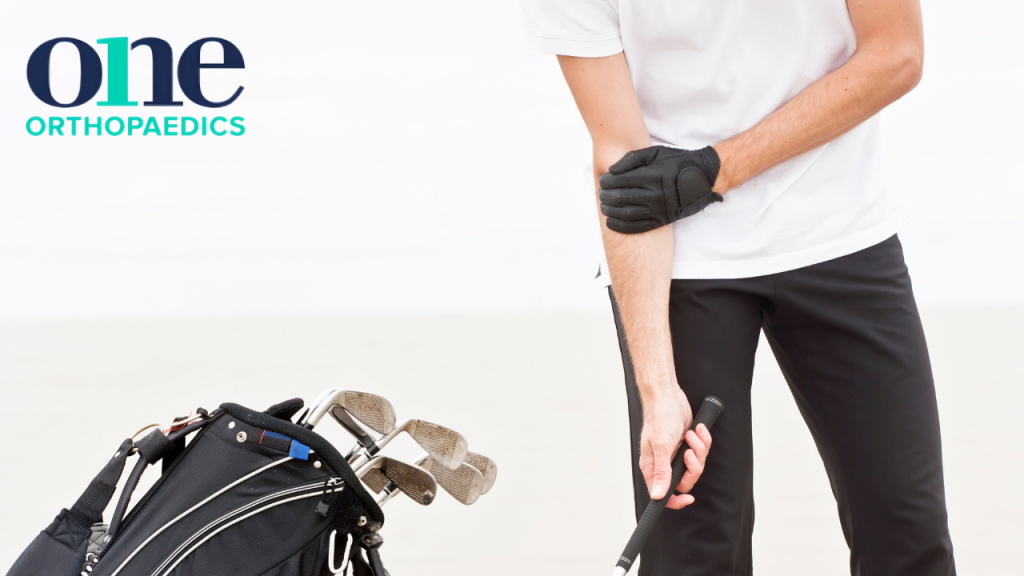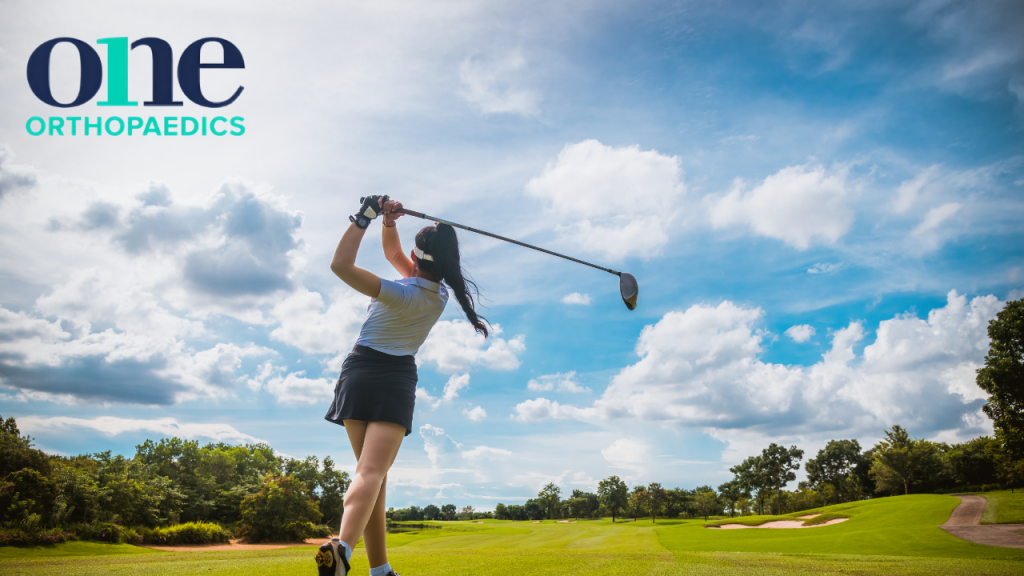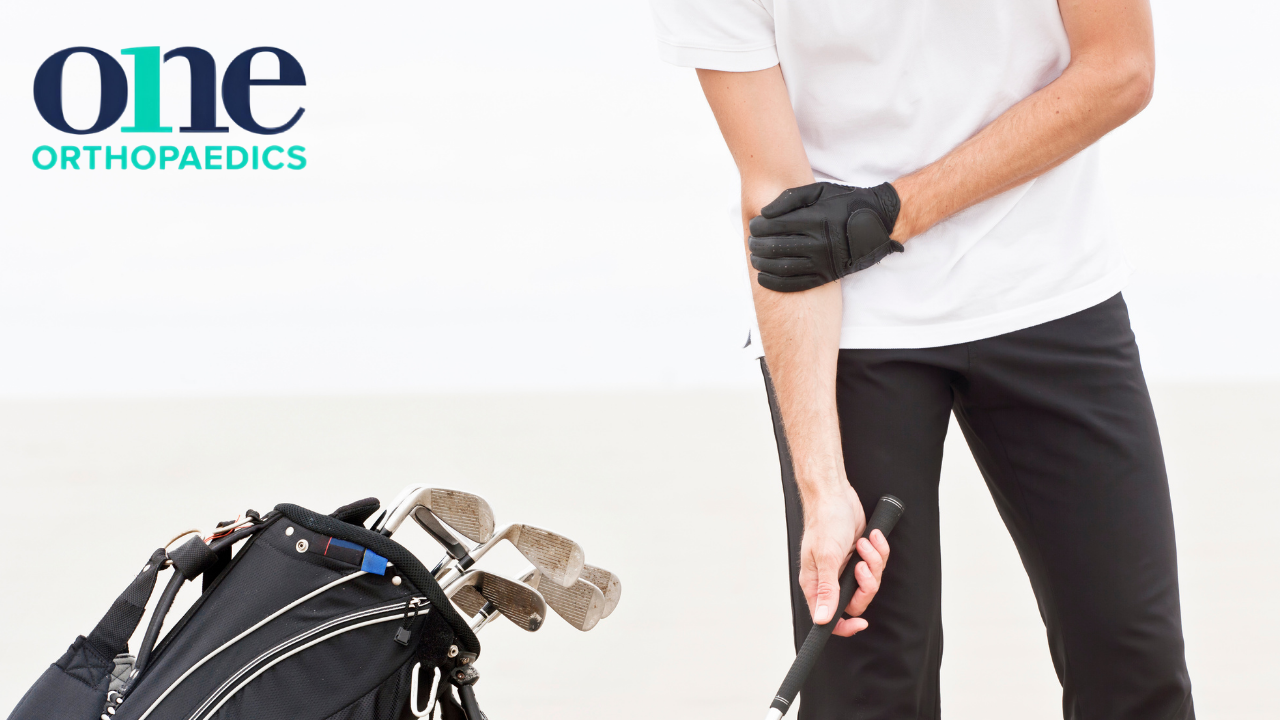Golfer’s elbow, medically referred to as medial epicondylitis, is a condition that causes pain on the inside of the elbow. It affects the bony bump known as the medial epicondyle, where a group of forearm muscles attach. These muscles are responsible for bending the wrist and fingers. When the tendon that connects them becomes irritated or damaged due to overuse, it can lead to persistent pain and reduced strength in the forearm. Although the condition is associated with golfers, it can affect anyone who performs repetitive gripping or wrist-flexing movements, including tennis players, weightlifters, plumbers, and manual labourers.

What Causes Golfer’s Elbow?
Golfer’s elbow is primarily caused by overuse or repetitive strain on the forearm muscles and tendons. Activities that involve repeated bending or twisting of the wrist, gripping tools, or lifting weights can put excessive stress on the tendon at the elbow. Over time, this microtrauma prevents the tendon from healing properly, leading to inflammation and the formation of scar tissue. This altered tissue is weaker, more painful, and less flexible than healthy tendon, resulting in long-term discomfort. In some cases, the condition develops gradually over months, while in others it can begin after a specific activity or injury.
What Does Golfer’s Elbow Feel Like
The most common symptom of golfers elbow is pain or tenderness on the inner part of the elbow, which may extend into the forearm. This pain typically worsens during activities involving wrist or finger flexion, such as lifting, gripping, or turning a doorknob. Some patients also notice stiffness in the elbow, a weakened grip, or a tingling sensation in the fingers. These symptoms can interfere with daily activities and exercise routines. If you have been working out with a golfer’s elbow, it is important to avoid exercises that strain the flexor tendons and consider consulting a specialist.
How Is Golfer’s Elbow Diagnosed?
At our orthopaedic clinics in Surrey and Guildford, we diagnose golfers elbows through a combination of physical examination and medical history. Your consultant will ask about your symptoms, activities, and how long the pain has been present. During the examination, they will apply pressure to the medial epicondyle and assess your wrist and forearm movements. While imaging such as X-rays may be used to rule out other conditions, a definitive diagnosis is often made clinically. In complex cases or if symptoms do not improve with treatment, an MRI scan may be arranged to assess the extent of tendon damage.
Non-Surgical Treatment Options for Golfer’s Elbow
In most cases, a golfer’s elbow can be treated effectively without surgery. The first step typically involves rest, activity modification, and the use of anti-inflammatory medications. Applying ice to the area and using a golfer’s elbow brace can also reduce strain on the tendon and support healing. Physiotherapy is an essential part of recovery, with tailored golfers elbow exercises designed to stretch and strengthen the affected muscles. These exercises aim to gradually restore function while reducing the tension at the tendon’s attachment point.

Advanced Therapies for Persistent Symptoms
When pain does not respond to initial treatment, additional therapies may be considered. Steroid injections can provide short-term relief by reducing inflammation around the tendon, often followed by a structured physiotherapy plan. For patients seeking a more natural and long-lasting option, platelet-rich plasma (PRP) therapy may be offered. This involves drawing a small amount of your blood, concentrating the platelets using a centrifuge, and injecting the resulting solution directly into the damaged tendon. PRP is rich in growth factors that promote tendon healing, making it an excellent golfer’s elbow remedy for those with stubborn or recurring symptoms.
Is Surgery Ever Needed for Golfer’s Elbow?
Surgical intervention is rarely required for golfers’ elbows, but it may be considered if symptoms persist for more than six months despite all other treatments. The goal of surgery is to remove the damaged tissue and stimulate the growth of healthy tendons. This may involve open surgery or minimally invasive techniques such as keyhole arthroscopy. Prior to surgery, your consultant may recommend further imaging to confirm the diagnosis and rule out any other conditions. Surgery is always tailored to your individual needs and is usually followed by a structured rehabilitation programme.
Can You Continue Exercising with Golfer’s Elbow?
Many patients ask whether they can continue golfing with golfers elbow or pursue other forms of physical activity. While it is important to avoid movements that aggravate your symptoms, complete rest is not always necessary. A physiotherapist can guide you through modified therapy for golfer’s elbow, which includes gentle stretches, resistance exercises, and proper warm-up routines. Strengthening the surrounding muscles while protecting the injured tendon is key to long-term recovery.
Where You Can Get Treatment for Golfer’s Elbow in Surrey and Guildford
If you are struggling with persistent inner elbow pain and searching for golfers elbow treatment near Surrey or Guildford, our orthopaedic team is here to help. We offer expert assessment, imaging if needed, and a wide range of non-surgical and surgical treatments tailored to your needs and activity levels. Whether you are looking for the most effective golfers elbow cure, considering golfer’s elbow therapy, or need advice about returning to sport, our specialists will support your recovery every step of the way.
Book a Consultation Today
Don’t let golfers elbow limit your work or hobbies. Book a consultation at our orthopaedic clinic in Surrey or Guildford and take the first step toward a pain-free future. Early diagnosis and treatment make a significant difference, and with expert care, most patients can avoid surgery and return to full function.
To find out more information about golfers’ elbows, click here.



